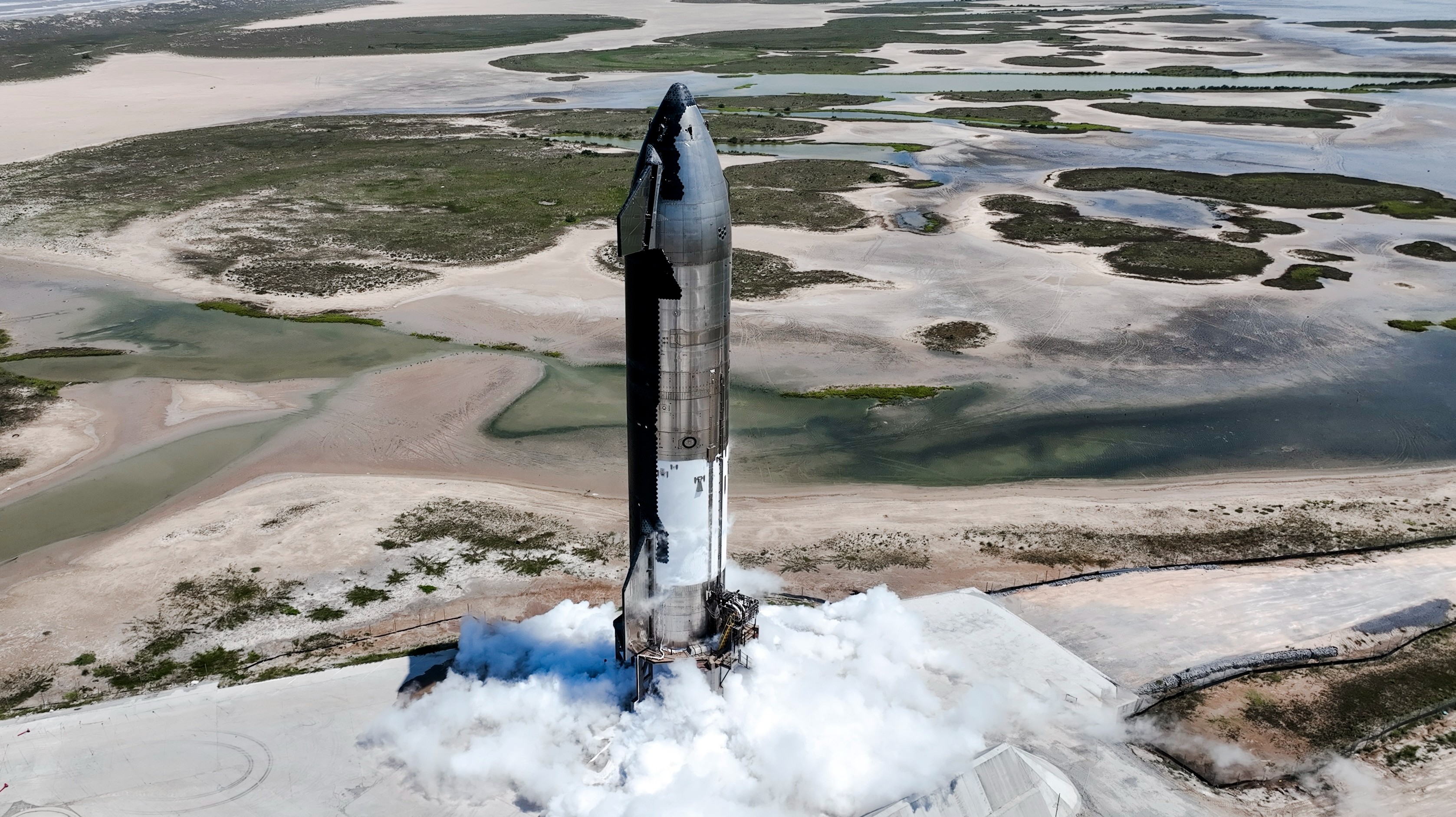SpaceX making 'well over 1,000' changes to Starship ahead of next launch
SpaceX apparently learned a lot from the first-ever test flight of its giant Starship rocket two months ago.
The company has made more than 1,000 changes to Starship's design since that landmark April 20 liftoff, which ended with a controlled destruction of the vehicle high over the Gulf of Mexico, SpaceX founder and CEO Elon Musk told journalist Ashlee Vance in a discussion on Twitter on Saturday (June 24).
SpaceX sent that self-destruct command after Starship experienced a number of problems, including the failure of the vehicle's two stages to separate as planned. The company is taking pains to ensure that latter issue doesn't recur on Starship's next flight, Musk said.
"So, we made a sort of late-breaking change that's really quite significant to the way that stage separation works, which is to use hot staging," Musk said.
Related: Relive SpaceX's explosive 1st Starship test flight in these incredible launch photos
In hot staging, the engines on a vehicle's upper stage begin firing before those on the first-stage booster finish shutting down. The strategy, which is commonly employed on Russian rockets, should boost Starship's payload-to-orbit capacity by around 10%, Musk said.
The decision to go with hot staging required a suite of design changes on Starship, however.
Breaking space news, the latest updates on rocket launches, skywatching events and more!
"The superhot plasma from the upper-stage engines has gotta go somewhere," Musk said. "So we're adding an extension to the booster that is almost all vents, essentially. So that allows the the upper-stage engine plume to go through the sort of vented extension of the booster and not just blow itself up."
The April 20 launch also caused considerable damage to the orbital launch mount at Starbase, SpaceX's facility on South Texas' Gulf Coast. The company has been working to repair that mount and protect it against similar damage on future launches.
For example, SpaceX is pouring about 35,300 cubic feet (1,000 cubic meters) of "reinforced high-strength concrete" at the mount. And the company is installing a water-spouting steel plate there as well, Musk said.
The plate is "basically like a gigantic upside-down shower head," he told Vance, who wrote a biography of Musk that was published in 2015. "It's basically gonna blast water upwards while the rocket is over the pad to counteract the massive amount of heat."
That heat comes from the 33 Raptor engines on Starship's first stage, a giant booster the company calls Super Heavy. The upper stage, a 165-foot-tall (50 meters) spacecraft known as Starship, sports six Raptors.
The Starship that flew on April 20 was powered by Raptors that "were somewhat of a hodgepodge," a collection that was built and tested over the course of a year or so, Musk said. The Starship being groomed for the next flight will feature more uniform engines with several slight but important improvements.
These changes are "very inside baseball," the billionaire entrepreneur told Vance. For instance, the new Raptors sport "an improved design of the hot gas manifold, as well as higher torque on the bolts of the hot gas manifold," Musk said.
The April 20 launch aimed to send Starship's upper stage partway around Earth, ending with a splashdown in the Pacific near Hawaii. The next liftoff will have similar aims, Musk has said.
The pad and the next Starship vehicle — consisting of prototypes called Booster 9 and Ship 25 — should be ready for a launch in roughly six weeks, he told Vance.
But SpaceX isn't in complete control of the timeline. For example, a coalition of environmental groups is currently suing the U.S. Federal Aviation Administration, claiming the agency didn't properly assess the damage Starship launches can cause to the South Texas environment and community.

Michael Wall is a Senior Space Writer with Space.com and joined the team in 2010. He primarily covers exoplanets, spaceflight and military space, but has been known to dabble in the space art beat. His book about the search for alien life, "Out There," was published on Nov. 13, 2018. Before becoming a science writer, Michael worked as a herpetologist and wildlife biologist. He has a Ph.D. in evolutionary biology from the University of Sydney, Australia, a bachelor's degree from the University of Arizona, and a graduate certificate in science writing from the University of California, Santa Cruz. To find out what his latest project is, you can follow Michael on Twitter.

